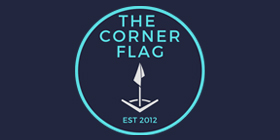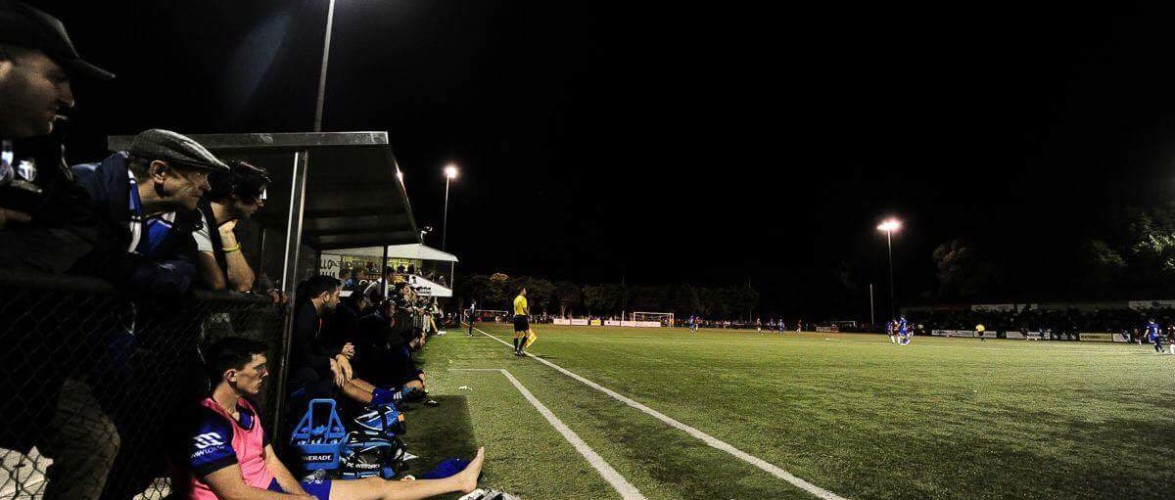Photo: Mark Avellino
When the FFA Cup Round of 32 draw was announced in late June, Jamie Maclaren tweeted a desire to face Green Gully “for obvious reasons”.
It wasn’t because the Brisbane Roar man wanted an NPL opponent for a supposedly easier run to the next round, but because it would have a been a trip home to his childhood club in Melbourne’s west.
Maclaren is one of the highest-profile Victorians to currently represent the Socceroos, his journey to a national team debut entailing a spell in England before earning senior exposure at Perth Glory and Brisbane. He is also an example of many Victorian-born, raised or developed players to make a Socceroos debut without experience at one of Melbourne’s two A-League clubs.
A-League clubs going homegrown
In the first FFV Community in Business function in November 2015, new Perth Glory CEO Peter Filopoulos had just moved to Western Australia after the club’s salary cap scandal. With previous experience at South Melbourne and AFL clubs Hawthorn and North Melbourne, he said one of the club’s plans to become attractive again was to focus on the development of homegrown players, bemoaning the talent drain out of Western Australia over the years to interstate A-League clubs – names such as Adam Taggart, Trent Sainsbury, Eli Babalj, Scott Galloway, Jesse Makarounas and Brandon O’Neill.
Since then came the signings of high profile players returning to WA, including Shane Lowry, Adam Taggart, Chris Herd (who since returned to England) and Rhys Williams. In total, upwards of 15 contracted senior players at Perth Glory were born or raised in the state.
It’s also a strategy that served Adelaide United well recently. Since returning home, Dylan McGowan and Craig Goodwin reached new heights, Stefan Mauk was an x-factor in the club’s championship, while exciting youngsters Awer Mabil and Bruce Kamau also burst onto the scene at various points. Goodwin and Mauk’s form earned them European moves, and while Kamau and young defender Ruon Tongkyik have been lured by Melbourne City, in have come Ben Garuccio, Ryan Kitto and Marc Marino to their home state.
By contrast, Melbourne Victory have so far signed James Donachie (Queensland) and Mitch Austin (New South Wales), while James Troisi (South Australia) returns after an earlier stint in 2013-14, alongside Spaniard Alan Baro. The players of Victorian origin contracted at the club are Nick Ansell, Leigh Broxham, Rashid Mahazi, Lucas Spinella and Stefan Nigro, alongside English-born and Melbourne-raised George Howard.
Meanwhile, after initially promoting Wade Dekker, Hernan Espindola and Matt Millar last season, Melbourne City released all three – alongside Nick Symeoy the campaign prior. City currently has three Victorian players in its senior squad (Manny Muscat, Ivan Franjic and Paulo Retre), seven from New South Wales and four from South Australia.
Statistically, both Melbourne clubs have the lowest percentage of homegrown players from their home state.
Victorians in the A-League
Currently, there are 19 players in total who can be considered Victorian products, meaning 10 play for clubs outside Victoria. That is a figure considerably less than NSW, and still behind Queensland and Western Australia, while foreigners make up 40 of the player rosters.
Victorians in the Socceroos
It’s not a case of Victoria simply not producing players worthy of A-League or Socceroos careers. As mentioned, Maclaren was identified by the Blackburn Rovers as a youngster, before moving back to Australia to continue his development – but it wasn’t a Melbourne club where he made his breakthrough.
Certainly football transfers are circumstantial, and it just so happened that Brisbane Roar coach John Aloisi was able to offer Maclaren a starting striker role at the time. Likewise, the Melbourne clubs have had a hand in developing or getting interstate Socceroos’ careers back on track – think Mitch Langerak, Robbie Kruse, Jason Geria, Mark Milligan, James Troisi and Aaron Mooy.
In fact, Victorian representation in the national team is strong:
NSW: 16 (37%)
VIC: 10 (23%)
QLD: 7 (16%)
SA: 5 (12%)
WA: 3 (7%)
ACT: 1 (2%)
TAS: 1 (2%)
Matthew Spiranovic, notably a North Geelong Warriors product, was also at Keilor Park, Melbourne Knights, the VIS and AIS before FC Nürnberg signed him. After stints in Asia he played at the Western Sydney Wanderers, before heading back to Asia.
Jackson Irvine was a junior with Ringwood City, Knox City, Endeavour United and Richmond SC. While Melbourne Victory were interested, Celtic snapped him up, and he was plying his trade in Scotland’s top flight – which also led to a stint in the Scottish youth national team – before signing for Burton Albion in the Championship.
Jason Davidson was in the Japanese development system before going to Hume City, then Portugal, then Holland, and now England.
Mat Leckie: Bulleen, to Adelaide United, to Germany.
Ivan Franjic: the VPL, to Brisbane Roar, to Russia, to Melbourne City.
Eugene Galekovic: Moved to Adelaide after failing to break into Melbourne Victory’s XI
While Victorians aren’t the only players to take a varied career path, there haven’t actually been many Victorian Socceroos to come through via a Melbourne A-League club. Aziz Behich, who went via Green Gully to Melbourne Victory, back down to Hume City and then to Melbourne Heart before heading to Turkey, is the best example.
It’s a far cry from the days of Mark Viduka (Melbourne Knights), Mark Bresciano (Carlton), Vince Grella (Carlton via Canberra Cosmos) and many more graduating overseas from Melbourne clubs in the NSL era. Paul Wade, with over 80 national caps, played almost his whole career in the NSL in Victoria.
Constraints
It doesn’t need to be said that, in terms of global football, the A-League isn’t a destination league. Kenyan-born Thomas Deng’s move from South Australia, to Victoria’s state leagues and NPL, and Victory to Dutch powerhouse PSV is an example of the combined role of the NPL and A-League in playing a developmental role for footballers.
Regardless, the A-League should still be seen as a league to break into professionally for state elite footballers. Briefly summarised, there are a number of constraints that prevent this from occurring most effectively:
- A-League rosters: An issue not only relevant in Victoria, breaking through is already difficult when there are only around 200 senior contracts available in the A-League, up to 50 of those available to visa players – meaning a ratio of roughly 40/10 in Victoria. It also goes without saying that Melbourne’s A-League clubs have a responsibility to fill some Victorian quota. With increasing corporate obligations, clubs will employ the individuals best believed to fulfill their objectives to stakeholders. In that respect, some of the most talented youngsters in the sides will inevitably miss out. This year alone Phil Petreski (City), Christian Cavallo, Nick Glavan, Damien Miskulin, Kieran Dover and Joey Katebian (all Victory) are high-profile players who have all returned to the NPL, with Katebian now signing with Brisbane Roar as Maclaren’s understudy (ironically both Brisbane’s strikers are Victorian).
- Attacking Visa players: The task of breaking through becomes much more difficult for an attacking player, especially a striker. Victory’s starting front third (Barbarouses, Khalfallah, Berisha, Finkler) were all Visa players, with the focus usually being on signing signings who can add to the league’s profile. “The A-League clubs always aim to fill their visa spots with nines, 10s, and these days sixes and eights, building their spine with visa players … They fill the wings and full-back roles with younger boys, so that makes it tough,” Bentleigh Greens midfielder Tyson Holmes, an attacking midfielder with experience trialling at three A-League clubs, said recently.
- Professional/semi-pro gap: Once a player is in the professional system with 20-30+ caps in the A-League, it is much easier to earn another deal than clubs conditioning a semi-pro/youth player to peak match fitness and sharpness. A topic previously discussed here.
- NPL identity: Ambitious NPL clubs with their own goals regarding future A-League aspirations, league and FFA Cup objectives also treat the NPL like a standalone league, rather than an A-League feeder. Clubs look for best players available (also including interstate players) to reach these objectives, and clubs detest the current lack of compensation for NPL youth or senior players who are approached by A-League clubs – as explored previously, there’s a disconnect between the A-League and NPL, and arguably the success of the NPL as a system of development can also be questioned.
- Salary cap: In that respect, the economics of a salary capped competition means the A-League isn’t always an attractive option for the best NPL players (despite recent salary cap exemptions for NPL signings). When a prominent state footballer can combine a pay packet of anywhere upwards of four figures per week combined with their day jobs, why give that all away for the risk of cracking it in the A-League on close to minimum wage?
- Infrastructure: A comment often is that Victorian facilities pale in comparison with their New South Wales counterparts. This can be looked at in terms of the sporting hierarchies in both states. Whereas football in NSW and Queensland can share square pitches with the rugby codes, Victoria is dominated by AFL in winter and cricket in summer, making it much more difficult for clubs to compete for funding.
- Coaching: An often overlooked aspect of the state of football in Victoria is that coaches face similar constraints to players regarding a lack of incentive or professional opportunities. With 10 head coaching opportunities in men’s and youth football, and nine in the W-League, there are very few available head coaching roles. In recent years, Victory have utilised more international (Dave Edmondson, Jeff Hopkins, Darren Davies, Vaughan Coveny, Mike Mulvey, Gareth Naven, Jim Magilton) than local coaches. And it’s much less common to see Australian (let alone Victorian) coaches break through overseas.
- Fees: A common agreement is that NPL fees price too many juniors out of the game. Anywhere over four figures per season can set a family back tens of thousands of dollars over the tenure of their boys’ youth careers, which is simply unsustainable for many, and a system that loses too many talented players too early (often to other more affordable sports) and creates the perception that some families can ‘pay their way’ through elite state football.
Future
While current Victorian representation on the national stage is arguably strong, the future is more concerning, summed up in a nutshell by the fact that no Victorians featured in the recent Joeys AFF U-16 Championship-winning squad. Sebastian Pasquali, who had drawn praise for his involvement in the ICC friendlies, was overlooked on his league form. The system is not as successful as it can be when considering the historical success of Victoria as a breeding ground for international footballers and coaches.
“It is very difficult for us in this environment as we’d love to be more and more involved in the game and help it grow as professionals. But we understand where we’re at and cannot hide away from that, so trying to get to that next step is very difficult at this stage for … the NPL,” Bentleigh Greens coach John Anastasiadis says.
“At the moment it is what it is, and we have to live with that and hope that in due time the game will become more professional in this part of the world in terms of the second and third tiers, where we have more time to work with youngsters and make them better players.”
Despite the high-profile successes of the Kevin Muscat-led Melbourne Victory in the A-League, NPL Victoria clubs in the FFA Cup, and a handful of locally developed Socceroos led by one of Victoria’s favourite sons in Ange Postecoglou, the influence of Victorians in Australian football may be on a downwards trajectory if the tide doesn’t turn.

